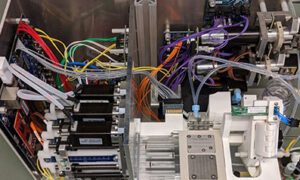Audio editing has transformed dramatically over the past few years, yet Audacity remains the go-to choice for millions of creators worldwide. As we navigate through 2025, this open-source powerhouse continues to evolve, offering professional-grade audio editing capabilities completely free of charge. Whether you’re launching a podcast, producing music, or cleaning up recordings, understanding Audacity’s modern capabilities can revolutionize your audio workflow.
Why Audacity Still Dominates the Free Audio Landscape
In an era where subscription-based software dominates, Audacity stands as a testament to the power of open-source development. The platform has maintained its position as the world’s most popular free audio editor by consistently delivering features that rival paid alternatives. With over 114 million downloads recorded through FossHub alone, Audacity’s community-driven approach has created a tool that genuinely understands what creators need.
The software’s enduring appeal lies in its perfect balance between accessibility and power. Unlike complex digital audio workstations that require weeks of training, Audacity presents a straightforward interface that beginners can grasp within minutes. Yet beneath this simplicity lies a robust engine capable of handling everything from basic podcast editing to complex multi-track productions. This dual nature makes Audacity uniquely positioned in 2025’s audio editing landscape. For those ready to explore its capabilities, you can start download directly from the official website, ensuring you get the authentic, malware-free version.
What truly sets Audacity apart is its commitment to remaining completely free while continuously improving. Recent updates have introduced enhanced dark and light themes, master effects capabilities, and improved performance on larger projects. The development team’s focus on stability and user experience, rather than flashy features, has created a tool that professionals trust for critical projects. This reliability, combined with zero cost, makes Audacity an unbeatable proposition for audio creators at any level.
Essential Features That Make Professional Audio Accessible
Modern Audacity packs an impressive array of features that would cost hundreds of dollars in commercial software. The platform supports all major audio formats including WAV, MP3, AIFF, FLAC, and Ogg Vorbis, with additional format support available through the FFmpeg library. This universal compatibility eliminates the headaches of format conversion, allowing creators to focus on their content rather than technical hurdles.
The real magic happens in Audacity’s effects arsenal. Noise reduction technology has reached new levels of sophistication, capable of removing background hums, air conditioning noise, and other persistent distractions without affecting voice quality. The spectral analysis tools provide visual feedback that helps identify and eliminate problem frequencies with surgical precision. Advanced features like tempo adjustment without pitch change and pitch correction without speed alteration open creative possibilities that were once exclusive to expensive professional suites.
Plugin support exponentially expands Audacity’s capabilities. The software accommodates VST, VST3, LADSPA, LV2, Audio Units, Vamp, and Nyquist plugins, essentially giving users access to thousands of professional-grade effects and instruments. This extensibility means your Audacity installation can grow with your skills and needs. The built-in Nyquist programming environment even allows technically inclined users to create custom effects, pushing the boundaries of what’s possible in audio manipulation. Comprehensive documentation and tutorials are available here to help you explore the full potential of plugin integration.
Multi-track editing capabilities transform Audacity from a simple editor into a production powerhouse. Users can layer multiple audio sources, create complex arrangements, and mix projects with professional precision. The non-destructive editing approach introduced in version 3 means you can experiment freely without fear of permanently altering your original recordings. Real-time effects preview lets you hear changes before committing, streamlining the creative process significantly.
Streamlining Your Workflow with Modern Techniques
Efficiency in audio editing comes from understanding how to leverage Audacity’s tools effectively. The enhanced Remove Tool now features intelligent distraction detection, automatically identifying and eliminating common issues like background people or electrical interference. This AI-assisted approach saves hours of manual editing, particularly valuable for content creators working under tight deadlines.
The Truncate Silence feature has become indispensable for podcast editors and audiobook producers. Rather than manually cutting dead air between sentences, this tool automatically detects and removes silence based on customizable thresholds. The time saved on a typical hour-long podcast can be substantial, often reducing editing time by 30-40%. Smart application of this feature maintains natural speech patterns while eliminating unnecessary pauses.
Keyboard shortcuts and custom workflows further accelerate production. Experienced users develop muscle memory for common tasks like splitting clips, applying effects, and navigating between edit points. Creating effect chains for frequently used processing sequences eliminates repetitive steps. For instance, a podcast production chain might include noise reduction, compression, EQ, and normalization—all applied with a single command once configured.
Project organization has improved significantly with recent updates. The ability to save project templates means you can establish consistent starting points for different types of productions. Color-coding tracks, using descriptive naming conventions, and maintaining organized project folders prevents the chaos that often accompanies complex multi-track sessions. These seemingly simple practices dramatically improve efficiency when working on multiple projects simultaneously.
Audio Quality Enhancement Strategies
Achieving professional sound quality in Audacity requires understanding both the tools available and the principles behind them. The foundation of good audio starts with proper recording techniques—using quality microphones, recording in acoustically treated spaces, and maintaining appropriate input levels. Platforms like the SWGOH Webstore often highlight tools and tech used by creators, making it easier to discover the best equipment and software for audio perfection.
However, even perfect recordings benefit from thoughtful enhancement, and subpar recordings can often be salvaged with skillful processing.
The noise reduction workflow in Audacity follows a specific methodology for optimal results. First, capture a noise profile from a section containing only the unwanted sound. The algorithm then analyzes this profile to selectively reduce similar frequencies throughout the recording. Fine-tuning the reduction amount prevents the artificial sound that aggressive noise removal can create. The key is finding the sweet spot where background noise disappears without affecting the primary audio source.
Equalization serves as your tonal sculpting tool, allowing precise frequency adjustments to enhance clarity and presence. Understanding that male voices typically occupy 85-155 Hz while female voices range from 165-255 Hz helps target EQ adjustments effectively. Subtle boosts in the 2-5 kHz range can improve intelligibility, while careful cuts in muddy mid-range frequencies clean up the overall sound. The visual EQ interface makes these adjustments intuitive, with real-time preview confirming your choices.
Compression and limiting provide the final polish that separates amateur from professional productions. These dynamics processors even out volume variations, ensuring consistent levels throughout your project. The new compressor in recent Audacity versions includes gain reduction visualization, helping users understand exactly how the processing affects their audio. Factory presets from industry professionals provide excellent starting points for various content types, from gentle podcast compression to aggressive music mastering settings.
Future-Proofing Your Audio Skills
The audio editing landscape continues evolving rapidly, with AI integration and cloud-based workflows becoming increasingly prevalent. While Audacity development focuses on stability rather than bleeding-edge features, understanding where the industry is heading helps position your skills for long-term success. The upcoming Audacity 4.0 promises a complete UI overhaul while maintaining the accessibility that makes the software special.
Cross-platform compatibility remains crucial as creators work across different devices and operating systems. Audacity’s consistent performance on Windows, macOS, and Linux ensures your skills transfer seamlessly regardless of platform changes. The software’s open-source nature provides insurance against vendor lock-in, a growing concern as more companies shift to subscription-only models. Your Audacity projects will remain accessible decades from now, protecting your creative work.
Building a sustainable audio editing practice means developing skills that transcend specific software. While mastering Audacity’s tools is valuable, understanding fundamental audio principles—frequency, dynamics, phase relationships—creates transferable expertise. These concepts apply whether you’re using Audacity today or transitioning to other platforms tomorrow. Focus on developing your ear and technical understanding alongside software proficiency.
The community surrounding Audacity provides ongoing learning opportunities. Forums, tutorials, and user-created content offer solutions to virtually any challenge you might encounter. Engaging with this community not only solves immediate problems but exposes you to techniques and workflows you might never discover independently. As audio technology advances, staying connected to fellow creators ensures you remain current with best practices and emerging trends.
Maximizing Your Creative Potential
Audacity in 2025 represents more than just free software—it’s a gateway to professional audio production without financial barriers. The platform’s continuous evolution, driven by passionate developers and users, ensures it remains relevant despite competition from commercial alternatives. By mastering its features and understanding audio fundamentals, creators gain skills valuable far beyond any single application.
Success with Audacity comes from approaching it not as a compromise but as a conscious choice. Many professional podcasters, musicians, and audio engineers choose Audacity not because they can’t afford alternatives, but because it perfectly suits their workflow. Its streamlined interface, reliable performance, and extensive feature set create an environment where creativity flourishes without technical obstacles.
The journey from audio novice to skilled editor is more accessible than ever. Audacity’s gentle learning curve allows immediate productivity while offering depth for long-term growth. Start with basic cuts and fades, progress to noise reduction and EQ, then explore advanced techniques like spectral editing and custom plugin development. Each skill builds upon the last, creating a comprehensive understanding of digital audio.
As we look toward the future of audio creation, Audacity stands as proof that powerful tools need not be expensive. Its combination of accessibility, capability, and community support creates an ecosystem where anyone can produce professional-quality audio. Whether you’re recording your first podcast or mastering your hundredth song, Audacity provides the tools to realize your creative vision without compromise.



































